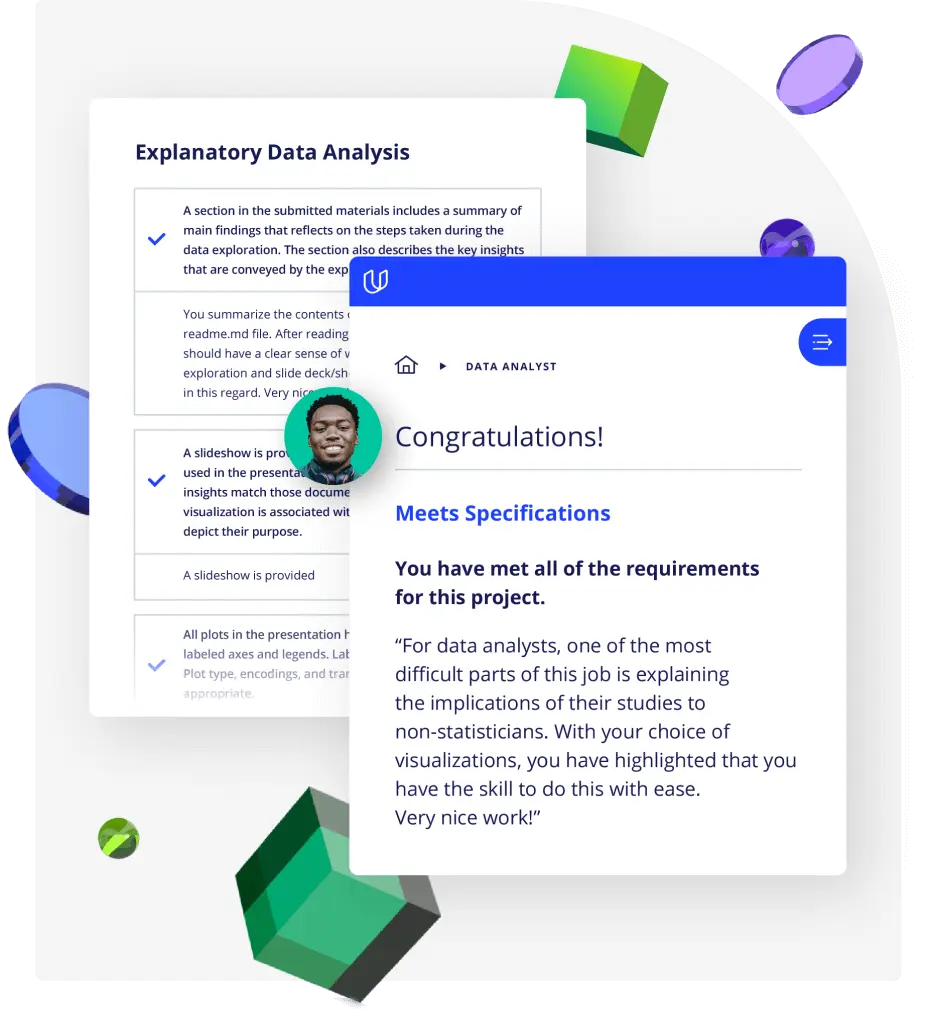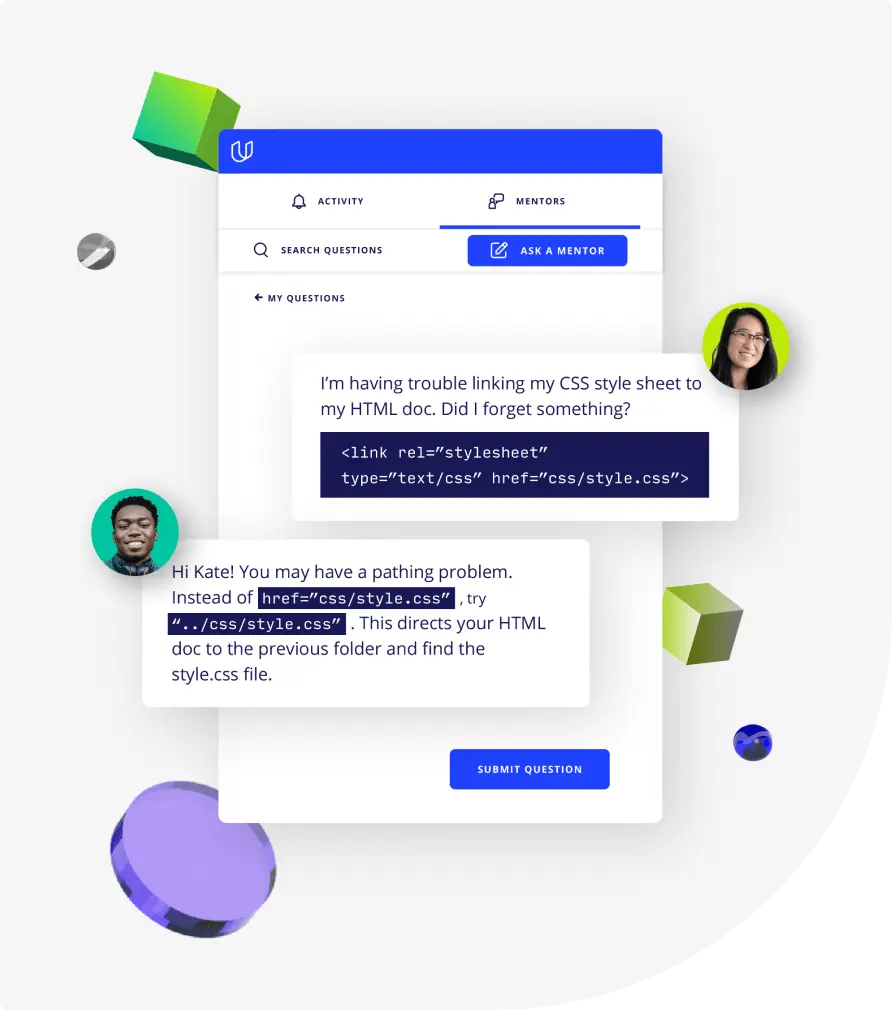Josh Bernhard
Staff Data Scientist
Josh has been sharing his passion for data for over a decade. He's used data science for work ranging from cancer research to process automation. He recently has found a passion for solving data science problems within marketplace companies.
Mat Leonard
Content Developer
Mat is a former physicist, research neuroscientist, and data scientist. He did his PhD and Postdoctoral Fellowship at the University of California, Berkeley.
Andrew has an engineering degree from Yale, and has used his data science skills to build a jewelry business from the ground up. He has additionally created courses for Udacity's Self-Driving Car Engineer Nanodegree program.
Jennifer has a PhD in Computer Science and a Masters in Biostatistics; she was a professor at Florida Polytechnic University. She previously worked at RTI International and United Therapeutics as a statistician and computer scientist.
Dan Romuald Mbanga
Instructor
Dan leads Amazon AI's Business Development efforts for Machine Learning Services. Day to day, he works with customers—from startups to enterprises—to ensure they are successful at building and deploying models on Amazon SageMaker.
Cezanne Camacho
Curriculum Lead
Cezanne is an expert in computer vision with a Masters in Electrical Engineering from Stanford University. As a former researcher in genomics and biomedical imaging, she's applied computer vision and deep learning to medical diagnostic applications.
Sean Carrell is a former research mathematician specializing in Algebraic Combinatorics. He completed his PhD and Postdoctoral Fellowship at the University of Waterloo, Canada.
Jay is a software engineer, the founder of Qaym (an Arabic-language review site), and the Investment Principal at STV, a $500 million venture capital fund focused on high-technology startups.
Luis was formerly a Machine Learning Engineer at Google. He holds a PhD in mathematics from the University of Michigan, and a Postdoctoral Fellowship at the University of Quebec at Montreal.













